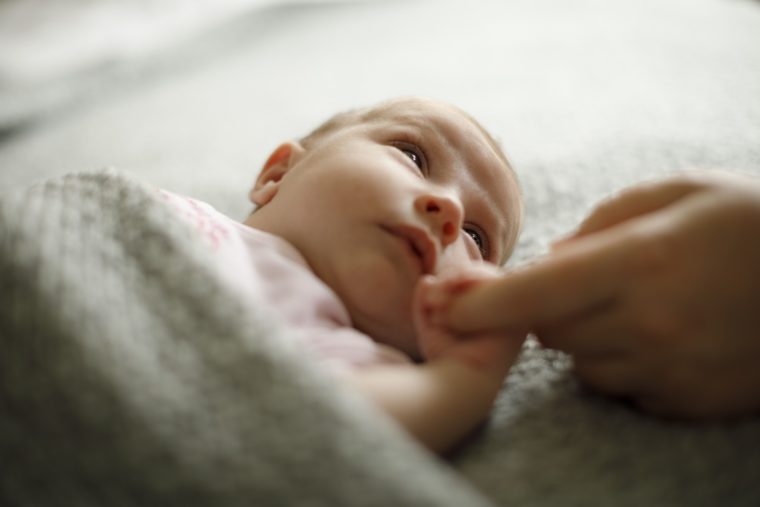During the first days with your little one, it is normal for you to have some doubts, such as when do babies start to see or when they’ll begin to move around or stand up. Every achievement of your child will be very exciting!
As for the sense of sight, there are some references that you can take into account to know in what stage of development your little one is. Something important to consider is that this is a sense that matures very quickly during a baby’s first year.
In this article, we would like to explain the milestones of babies’ visual development according to their age. Remember that each child grows and develops their senses and skills at their own pace, so don’t worry if your baby goes a little faster or slower.
Download Kinedu for FREE and start tracking your baby’s development!
When do babies start to see? Here are some milestones:
If you’re wondering at what age do babies start to see, check out the following indicators:
Newborns
A baby is not born with a fully developed sense of sight. Their vision can be considered to be quite blurry, they can’t focus, and they’re not yet able to distinguish colors. This is because the retina and cones (cells responsible for processing colors) have not yet developed.
Similarly, your little one’s eye color is probably not fully defined yet. In some cases, newborns have grayish eyes, but this doesn’t mean this will be their eye color later on. What happens is that the cells of their iris still don’t produce the pigment that will give their eyes their characteristic color.
Melanin is the pigment responsible for giving skin, hair, and eyes their hue. At approximately 6 months of age, the melanin distribution in the baby’s eyes reflects its final color.
3-4 months
From 3 to 4 months of age, your baby will begin to recognize, little by little, faces. They will also be able to distinguish certain colors, specifically red and green. Progressively your little one will begin to perceive more colors and tonalities.
5-10 months
When a child starts crawling, their visual ability will begin to strengthen. By being on all fours to crawl, your baby will begin to develop their binocular vision (ability to overlap the images received by each eye to form a single three-dimensional image), focus, and peripheral vision.
Thanks to crawling, your baby will be able to exercise their eye muscles as they explore and observe the different objects that are around them. Similarly, with the strengthening of binocular vision, babies will be able to perceive depth better.
In conclusion
Your baby will gradually increase their visual capacity so it is very important that the maturation and evolution of their sight is adequate. Our app, Kinedu, can help you monitor your baby’s progress and gives you lots of ideas on how to play and support their senses. You can download it here for free.
Now you know when do babies start to see. But if you wonder how to know if your little one’s development in this area is correct, we recommend that you consult with your pediatrician to constantly verify the progress of your little one. Regular vision tests will be very helpful!








